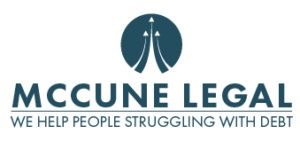Chapter 7 Bankruptcy Steps Explained
So, it’s official. You’ve decided that chapter 7 bankruptcy makes the most sense for your current financial situation and now you find yourself wondering…what happens next? A chapter 7 bankruptcy begins by filing forms with the appropriate bankruptcy court. The debtor must file their case at the proper venue, which is typically the location where the debtor has lived for the 91 days prior to the filing date. The main form is called a voluntary petition but there are many other forms that need to be completed in order to ensure your case is properly filed. Conveniently, all these forms can now be filed electronically. As of the date of this post, the current filing fee for a chapter 7 bankruptcy case is $335. That fee is typically paid at the same time the case is filed.
Filed and one step closer to a fresh start
Once the case is officially filed, it creates an order for relief, which puts in place what is called an automatic stay and it’s a big deal! It prevents creditors from taking any further action against the debtor. Garnishment, foreclosure, repossession, lawsuits, collection activities, harassment related to debts — all must stop. It’s the automatic stay that allows debtors to save their homes and most valued possessions. It is the first step towards a fresh start.
The commencement of the case also creates a bankruptcy estate, which is basically all the debtor’s property as of the date of filing the petition. There are a few things that can be pulled back into the estate of the debtor if they become entitled to them within 180 days of the filing date, such as an inheritance or life insurance proceeds. So, upon filing the case all of a debtor’s property technically becomes property of the bankruptcy estate. This is a strictly legal entity. Nobody comes knocking at your door to pack up all your things due to the fact that the vast majority of a debtors’ assets can be exempted from the estate.
The assigning of a trustee
After filing for chapter 7 bankruptcy, another part of the process includes having the court assign the panel trustee. This individual will conduct a meeting of creditors about a month or so after the case is filed. The debtor is required to attend this hearing and for most cases, that is the only appearance required of the debtor. Creditors are allowed to attend the hearing and question the debtor if they would like, but it rarely happens.
Most of these meetings last about five minutes and just involve the trustee asking the debtor a handful of questions. There’s really nothing to be nervous about. The primary purpose is to see if there are any non-exempt assets that belong to the bankruptcy estate so the trustee can liquidate them and provide a payout to the creditors. The debtor will usually be represented by his or her attorney at the creditor meeting and your lawyer will prepare you for the meeting beforehand.
Time is of the essence

There are various deadlines that come after the creditor meeting. The most important one is the deadline for creditors or the United States Trustee to object to the debtor’s discharge. They must have a valid reason for the objection and it needs to be done within 60 days of when the creditor meeting took place.
Another deadline involves objecting to exemptions that the debtor claimed. Creditors or the trustee have 30 days after the creditor meeting to object to the claim of exemptions.
You can’t talk bankruptcy without talking assets
In some cases there are enough non-exempt assets that belong to the bankruptcy estate and in those particular instances, the trustee will open up an asset case. In order to do so, there needs to be enough assets to provide a meaningful distribution to the creditors. There’s no exact number to determine what is “meaningful” as it varies by trustee but usually, the total value of non-exempt assets needs to be around at least $1500 in total.
The debtor is almost always first given the opportunity to buy back the non-exempt assets from the trustee. This is much easier than having to pick up the items or pay for an auctioneer. The trustee would much rather eliminate all those extra steps and just sell it back to the debtor if they are able to buy it back.
LAWYER’S TIP: If you have a lot of non-exempt assets that you don’t want to lose, don’t file for chapter 7 bankruptcy. Instead, file for chapter 13 bankruptcy and pay the value of those non-exempt assets over the span of 3 to 5 years and keep them!
If when you file for chapter 7 bankruptcy it is going to be an asset case, the trustee will send out a notice to all creditors so they can file a claim. In this case, the debtor is going to want to keep an eye on the claims that get filed because there may be non-dischargeable debts such as taxes and student loans. If the creditors don’t file claims, the debtor will want to file on their behalf so they share in the payout.
Remember the main benefit of filing for bankruptcy
It’s important to keep your eye on the prize and stay focused on the reason you decided to file for bankruptcy in the first place: the discharge. There are other benefits that come with bankruptcy, but the discharge is what you really want. It’s a piece of paper, signed by a federal judge that you’ve never met, that wipes out a lot of debt. Not necessarily all of your debt, but a good portion of it.
Once you file for Chapter 7 bankruptcy, your discharge typically comes about four months later. For most cases, that’s the end of the financial burdens and the beginning of your fresh start. Ready to get the second chance you deserve? Give McCune Legal a call today!

